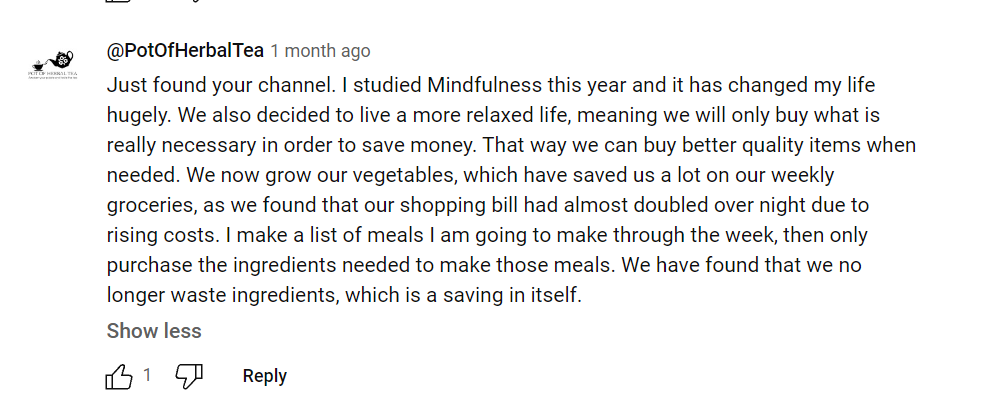Uncovering spending attitudes amongst consumers – and how brands are responding
It can, understandably, be quite difficult to see the silver lining to the dark cloud that is the cost-of-living crisis. But with the help of AI, Charline Roberts from the Consumer team at Incite has uncovered some trends amongst consumer conversations online, and examples from brands responding to these trends by creating value for their customers through the crisis and engaging them on a deeper level.
Back in July, we heard that around two-thirds of UK consumers already expected to cut back spending over the 2023 Christmas season, due to the unprecedented rise in cost-of-living.
However its impact on consumers, whilst incredibly challenging for many, is multi-faceted, complex and materialises itself in a variety of different ways. Making sense of the impact on consumer behaviour and navigating this complexity is the challenge being faced by all.
At Incite, we found that immersing ourselves in consumer conversations, whether it’s ahead of U&A studies or to feed into innovation workstreams, not only helps us build a solid, consumer-centric view of the situation, but also helps us uncover hidden opportunities and spark new ideas.
Today, with the help of our AI-powered topic modelling platform, strat7.ai, I’d like to dive into how cost of living is coming up in consumer conversations online and what opportunities lie within the crisis.
Reducing expenses and downsizing: identifying and cutting back on waste
Saving money and reducing expenses is the most obvious topic we’d expect to see emerging from consumer conversations on the cost-of-living crisis. Unsurprisingly, there’s been a growth in conversations online around ‘managing finances’, ‘reducing energy bills’, ‘cheap food’ as many are turning to reducing and downsizing their lifestyles, cutting down, spending less.
It’s been interesting to watch how brands are reacting to that. We’ve seen brands acknowledging and responding to that through comms, for instance British Gas recently launching a campaign placing the focus on their ‘Money Saving Engineers’ the ways in which they can help customers pay less on bills. We’ve also seen brands in higher-cost FMCG categories, (eg. maple syrups), exploring how they can bring more value to customers through smaller bottles for instance or blended ingredients.

Buy now, save later: optimising and creating efficiencies
Online conversations show us that consumers are not averse to spending a bit (and sometimes a lot) more on goods if it means creating efficiencies in the long term.
According to our topic modelling, online conversations centred around ‘energy efficiencies’ have seen around 80% growth in the past year.
Clearly, the rising cost of energy has made consumers more aware of the cost of running appliances, but taking a deeper look at conversations shows us that people are keen to spend that bit more if it means lower energy bills in the long-run. And brands are responding to this, with Amazon for instance launching multiple smart tech products and investing in the Alexa digital assistant.
We’re also seeing a continuous rise in number of homes being equipped with smart technology, with shoppers keen to make economies in the longer term whether through energy management or smart appliances.
Rethinking attitudes towards shopping and leisure: curbing spend and finding alternatives
The cost-of-living crisis has clearly seen consumers rethinking their behaviours when it comes to shopping and eating out. In 2023, our strat7.ai team saw a rise in searches around ‘second hand’, or ‘used clothes’. Apps such as Vinted are clearly benefitting and other retailers are adapting by launching second-hand sections such as Zara or H&M, in a bid to lure bargain-hunters.
Tightened household budgets also mean people are reconsidering other little ‘luxuries’ like eating out. This has proven to be a threat for some food chains, but an opportunity for others. We’re seeing brands such as Charlie Bingham, Warburton or Pot Noodles capitalising on that through new product development and innovation to try to bring excitement to at-home dining in an age where people are reducing eating out.
Buying less, but buying better
Although consumers are feeling the pressure it’s clear that a pocket of the population are not always cutting out luxuries or other non-essentials. What we’re seeing instead is increased purchase consideration and careful quality assessment.
The strat7.ai team recently dove into headphone shoppers’ online reviews, where they were able to make out the ‘non-negotiables’ (like noise cancellation and sound quality) versus the nice-to-have that would justify spending extra for their purchase.
“I own a pair of their H8 wireless on-ear headphones, and was looking to get similar sounding headphones for more active lifestyles. These deliver the premium signature sound the company is known for and have made my workouts and other activities more enjoyable no doubt. Obviously they are expensive, but the cost is certainly justified with the sound, build quality, and design of them.”
We can see something similar in the beauty and skincare category. According to WGSN, consumers are becoming increasingly discerning and able to trade down their beauty staples without actually trading down on quality. Disruptors such as Beauty Pie are capitalising on this, by providing luxury quality at a fraction of the price to members by cutting out the middle-man.

Although the cost-of-living crisis continues to be a challenge for brands, it does also carry an array of opportunities for those willing and able to listen to the consumer voice. Building a strong consumer understanding and finding innovative solutions will not only foster stronger customer relationships but also contribute to building healthier brands, in the long term.
If you’d like to find out more about how we can help you tackle your challenges or if you’d like to find out more about using strat7.ai please get in touch: london@incite-global.com.




